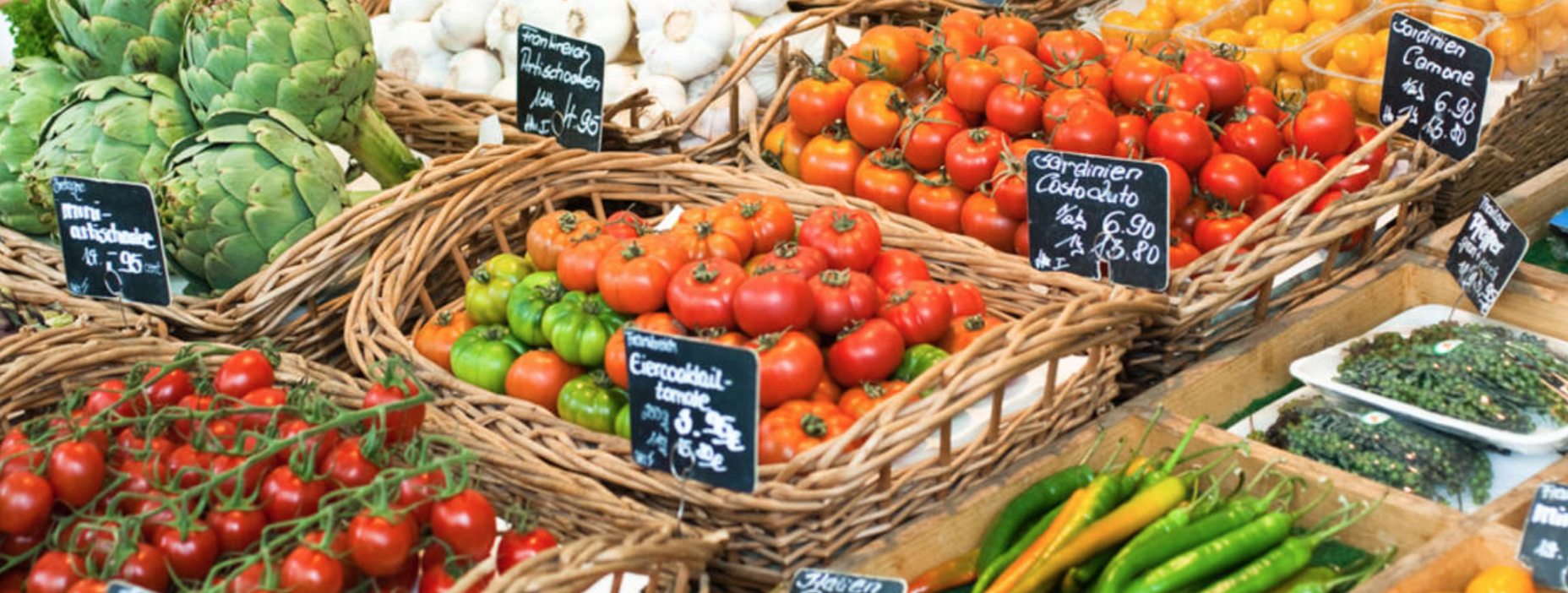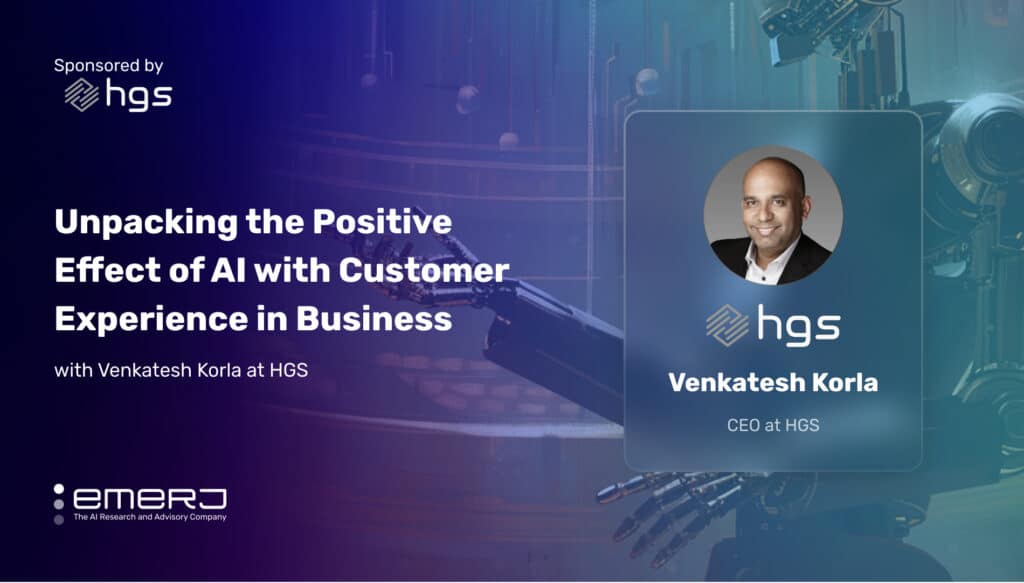In early 2017, Amazon unveiled a new application of AI outside its online domain: Amazon Go, an artificial intelligence (AI)-powered grocery where there are no cashiers and checkout lines. Shoppers activate the store’s smartphone app upon entering the store, grab the items they need, and leave through the same “gates” they enter without pausing to pull out a credit card or cash. Their Amazon account is automatically charged for what they take.
Technology vendors in the retail sector are just now beginning to apply artificial intelligence to the unique problems of grocery.In its Technology Vision 2017 for Consumer Goods Report, Accenture reports that 78 percent of consumer goods executives surveyed recognize AI’s potential to disrupt the status quo of business/consumer interaction. Sixty-eight percent of industry executives believe AI will have a significant impact on the industry over the next three years.
For grocers, in particular, the predictive capabilities of AI may play an important role in forecasting inventory needs, determining prices of products based on internal and external factors, analyzing customer behavior, loss prevention, delivery services–and potentially much more. For shoppers, AI could contribute a degree of convenience similar to the Amazon Go experience.
In this brief report, we will examine four major groups of AI applications are available in the grocery and produce industry:
- Inventory Management
- Theft Prevention
- Marketing and Promotion
- Food Waste Reduction
Our preliminary research for this article aimed to determine how the AI is being applied, how it impacts specific business processes — and, when possible, how it impacts the bottom line. Each section below will showcase a specific process of the grocery space and feature vendor that offers an AI-powered solution.
Readers with a specific interest in food and produce should review our previous articles on AI in Food Services and Restaurants and AI in Food Processing.
Inventory Management
One interesting development in AI for groceries is the introduction of robotics to help in inventory management, which if left unchecked may result is pricing errors and out of stocks, all of which can directly impact the sales and profits. Fellow Robots has developed NAVii, which the company describes as an autonomous retail robot that scans the store every day to collect high-definition images of products, prices, and location.
The company claims it uses visual recognition and machine learning technologies to determine out-of-stock products, price discrepancies, and misplaced items. NAVii’s Dashboard notifies employees of the discrepancies to enable them to make immediate changes. The data capture camera scans shelves from the floor to 2.4 meters high, sends relevant information, such product details, aisle and shelf number and the number of missing items, to a store associate who then replenishes the stock. The camera holds 8 to 10 hours of battery life on a four-hour charge.
Among the customer services it provides are information about products and their location, as well as details about the store’s loyalty program. At the moment, CEO Marco Mascorro claims that the NAVii robots can understand and speak English and Spanish. It can also aid in marketing or promotion activities by displaying branding and advertisements on its screen, as shown on the company website.
Currently, Fellow Robots claims retail stores as clients, but it claims it can also serve groceries and supermarkets. This 1:39-minute video shows how the robot scans the shelves inside BevMo!, informs the store associate to restock items, and helps the customer quickly find the correct aisle to grab an item.
The company also claims Lowe’s Home Improvement as its client, rebranding the NAVii as LoweBot.
Another solution that Fellow Robots offers is ReStore, a mobile-based application that informs employees to restock the shelves, fix price errors and place shelf labels.
Co-founder and Chief Executive Officer (CEO) Marco Mascorro leads the development and innovation of robotics and AI at the company. He has held positions as Robotics Professor at the Monterrey Institute of Technology, faculty of Singularity University at NASA Research Park in Silicon Valley as Teaching Fellow of Robotics and Artificial Intelligence, and director of the Innovation Lab.
His website lists degrees in Exponential Technologies from Singularity University; and mechatronics, robotics, automation engineering from both Tecnologico de Monterrey and the University of Applied Sciences of Offenberg, although it is unclear what academic levels.
As a young professional, Mario has worked as a robotics researcher at the Kanazawa Institute of Technology in Japan, building robots for search and rescue.
Theft Prevention
Stores have always suffered losses from shoplifting customers. Massachusetts-based StopLift offers a machine vision system that aims to reduce or eliminate theft and other losses at retail chains. The company’s product, called ScanItAll, is a checkout vision system that detects checkout errors or cashiers who avoid scanning, also called “sweethearting”, at the grocery checkout counter.
Sweethearting is the cashier’s act of fake scanning a product at the checkout in collusion with a customer who could be a friend, family, fellow employee, someone they can call by the endearment.
ScanItAll’s computer vision technology works with the grocery store’s existing ceiling-installed video cameras and point-of-sale (POS) systems. Through the camera, the software “watches” the cashier scan all products at the checkout counter. Any product that is not scanned at the POS is recognized by the software and considered a loss.
This 2:17-minute video shows CEO Malay Kundu demonstrating how the StopLift works at the grocery store Big Deal, located in New York City:
Stoplift claims that ScanItAll can identify a variety of sweethearting behaviors including covering the bar code, stacking items on top of one another, skipping the scanner entirely and directly bagging the merchandise.
Piggly Wiggly supermarkets reported losses of $6,000 to $10,000 monthly at one of its outlets due to checkout shrinkage, due to inattentive cashiers or sweethearting. Since installing StopLift and retraining employees, shrinkage has declined to $1,000.
US grocer Big Y recently completed the deployment of ScanItAll™ in 35 of its 56 stores to determine whether cashiers are deliberately sweethearting products. However, there are no follow-up stories about reduced losses as a result of the Stoplift deployment.
CEO Malay Kundu holds a Master’s degree in Electrical Engineering and Computer Science from the Massachusetts Institute of Technology and an MBA in Entrepreneurship and General Management from Harvard Business School.
Alan O’Herlihy, Founder and CEO of Ireland-based Everseen, who spoke with Emerj in 2017 about AI in theft prevention, said that the great value of machine vision applications is the large amount of visual data they collect, which will keep improving the algorithm to learn and label more examples of various theft behaviors.
Marketing and Promotion
Like any industry, marketing and promotions are vital to a grocery store chain’s brand awareness and steady profits.
To address the need for better processes in marketing for groceries, Ontario, Canada-based Daisy Intelligence developed an AI-powered application for grocers and other retail establishments.
The app works using at least two years’ worth of the client’s operations data related to point of sale and promotional history. This data is processed, taking into consideration factors such as the relationships between products, cannibalization effects, promotional patterns, forward buying effects, seasonality and competition, and provides weekly promotional recommendations for a variety of marketing channels such as flyers, e-commerce, direct marketing, or mobile app promotions.
According to the company website, Daisy uses this data analysis to determine the following::
- The combination of products to promote weekly in each channel
- The cadence or pattern to promote specific items
- Product combinations that will bring best results to the bottom line
- The increase a certain promotion brought to the bottom line
- The assortment of products per store or region, based on local market conditions
The final decision of which promotion to execute falls to the business. Results of the promo are stored in the platform and referenced in future recommendations based on machine learning. In the long term, the company claims that the app helps improve an organization’s promotional effectiveness, logistics, stock-outs, transaction size, revenue and margin.
For the purpose of inventory forecasting, the company claims that the app can help determine the amount of inventory needed to support:
- Product assortment plan
- Promotion without overstocking
- Ability for each store to meet local demand
In this 1-minute video, Founder and CEO Gary Saarenvirta claims that Daisy can help groceries and supermarkets determine specific details such as the prices to charge on products, what products to promote or to include in a promotional basket, even how much of a certain products to put on which aisle.
Harps Food Stores, Inc., based in Springdale, Arkansas, implemented Daisy Intelligence’s platform in early 2017 to improve and optimize decision-making surrounding pricing and promotions at its 87-store grocery chain. Actual results were not revealed, but Vice President of Marketing at Harps is quoted as saying, “Daisy’s ability to provide us with the associated sales on every item within the individual transactions helps us to promote the items most pertinent to our customers.”
Daisy Intelligence Founder and CEO Gary Saarenvirta leads the company’s research and development teams, after heading Adastra Corp.’s operations, IBM Canada’s analytics and data warehousing practices, and Loyalty Consulting Group’s analytical services. He holds a bachelor’s degree in aerospace engineering from the University of Toronto, and master’s degree in Computational Fluid Dynamics.
Inventory Forecasting and Food Waste Reduction
According to the United Nations Food and Agriculture Organization, food losses and waste yearly amounts to roughly$680 billion in industrialized countries and$310 billion in developing countries. In the U.S. alone, food wastage at the retail and consumer levels amounted to approximately 133 billion pounds, or $161 billion worth of food in 2010.
Motivated by these numbers, Afresh Technologies has developed an AI application which the company claims can forecast demand and inventory replenishment solutions for grocers (interested readers can refer to our full article on Machine Learning for Inventory Management). The app, according the company, aims to reduce food waste on a massive scale, increase food freshness, and maximize customer profitability for clients by avoiding stock outs and turning inventory much faster.
In a Future Food SF presentation, Afresh CEO Matt Schwartz CEO claims that the Afresh app uses deep learning algorithms which process millions of data points layer by layer, to provide a demand forecast at the item-level. Based on the forecast, the app then recommends the how many items are needed to replenish the inventory. The recommendation is automatically integrated into the grocer’s workflow.
The company website states that using this will result in 50 percent less waste, 80 percent fewer stock-outs and three inventory turns. We were unable to find any case studies to back up these claims, and we were also unable to find any specific identifiable customers of Afresh. It appears that the firm is in pilot phase, and it isn’t safe to to take their ROI assumptions seriously without more evidence with paying customers.
The company also claims that when the technology was piloted at regional chains, it resulted in profit increases of more than $100K per store each year. However, we were unable to locate profit figures or other specific information about these stores.
CTO Nathan Fenner has master’s degrees in mechanical engineering and business administration, both from Stanford University, and spent his previous five years in Liquid Robotics.
Concluding Thoughts
The advent of AI in grocery and produce has the potential to benefit grocers in two major ways:
- Customer Experience: For grocery businesses, AI could take a business’ existing data and transform it into understandable insights about consumer behavior and purchase decisions. Customer experience and customer service are domains where we continue to see growing retail AI application – and grocery is no exception.
- Operating Efficiencies: Another benefit is AI’s machine learning capability to create a wide range of recommendations that can be applied to nearly every process of the grocer’s supply chain; this includes inventory assortment, replenishment, promotions, point of sale (POS) security and delivery logistics, among others. All these predictive capabilities aim to ensure nothing is lost and that financial margins are protected.
For shoppers, the convenience of AI would most likely reside in grocery delivery to their location, increased freshness of produce and the absence of long lines. Benefits could also include having more information about the items at their fingertips, learning about product promotions on time through email alerts from their grocer or through chatbots, and receiving rewards for customer loyalty.
A percentage of shoppers will continue to crave the human connection because nothing will compare to the experience of seeing, touching and smelling produce at the grocery, but AI presents an option to those looking for and/or who need this convenience.
In a research announcement released in January 2018, SymphonyRetail reveals that shopping with large baskets at the grocery store has declined by a 3-4 percent from the previous year, as consumers order online when purchasing 15 items or more. The study also revealed that online grocery shopping has risen 14% in the U.S. in the past year. Additionally, 76% of consumers increasingly prefer prepared food instead of home-cooked meals.
We predict that AI within food industry will continue to address various challenges, such as synchronizing multiple operating systems between various departments and functions (e.g., POS, warehouse management logistics). These technologies will continue to require human interaction and feedback to make them viable in what appears to be a growing AI market within this industry.
AI in the grocery business, however, still faces challenges. This includes having to bridge the disparate systems in its various departments such as POS, warehouse management, and logistics. The next step is to find harmony between these AI tools and the human talent to ensure streamlined operations and better bottom lines.
Header image credit: MTL BLOG














